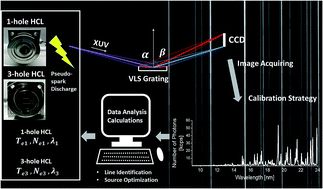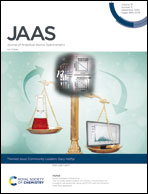Extreme ultraviolet plasma spectroscopy of a pseudospark XUV source
Abstract
The development of extreme ultraviolet (XUV) sources for tabletop operation has enabled a range of new applications in nano-structuring and spectroscopy. The quantitative characterization of the XUV emission obtained from a pseudospark hollow cathode lamp (HCL) was carried out with a self-developed flat-field spectrometer for the λ < 25 nm spectral range. The wavelength calibration in XUV spectroscopy is challenging, because of the poor grating resolving power for ultrashort wavelengths, which propagate only in a vacuum. Among three alternative methods, flat-field calibration showed the highest accuracy over a wider range. The plasma parameters were extracted from the calibrated spectra. The electron temperatures of the discharged N2, O2 and Ar gases in the HCL are consistent in the range of 17–22 eV. The intensity of the XUV radiation decreased with the increase of working gas pressure, due to self-absorption. A self-developed one-hole HCL exhibited three orders of magnitude higher electron density (Ne = 1.5 × 1019 cm−3) compared to the state-of-the-art three-hole HCL design (Ne = 1016 cm−3), as confirmed by means of collisional-radiative modelling. These results, along with a comparable spectral fingerprint, suggest more extensive and homogeneous excitation across the entire plasma body in the own design.

- This article is part of the themed collection: Community Leaders: Gary Hieftje


 Please wait while we load your content...
Please wait while we load your content...